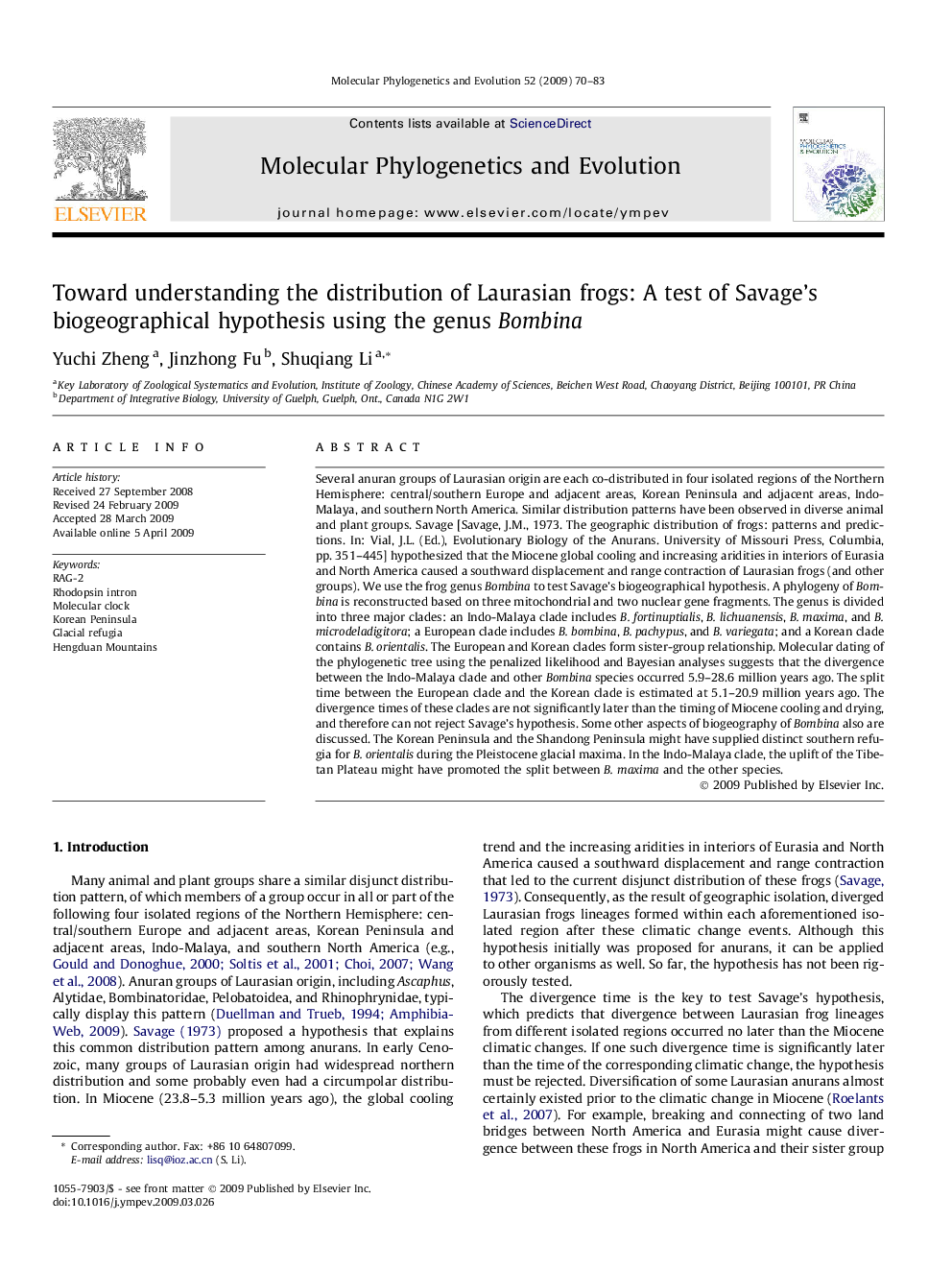| Article ID | Journal | Published Year | Pages | File Type |
|---|---|---|---|---|
| 2834903 | Molecular Phylogenetics and Evolution | 2009 | 14 Pages |
Several anuran groups of Laurasian origin are each co-distributed in four isolated regions of the Northern Hemisphere: central/southern Europe and adjacent areas, Korean Peninsula and adjacent areas, Indo-Malaya, and southern North America. Similar distribution patterns have been observed in diverse animal and plant groups. Savage [Savage, J.M., 1973. The geographic distribution of frogs: patterns and predictions. In: Vial, J.L. (Ed.), Evolutionary Biology of the Anurans. University of Missouri Press, Columbia, pp. 351–445] hypothesized that the Miocene global cooling and increasing aridities in interiors of Eurasia and North America caused a southward displacement and range contraction of Laurasian frogs (and other groups). We use the frog genus Bombina to test Savage’s biogeographical hypothesis. A phylogeny of Bombina is reconstructed based on three mitochondrial and two nuclear gene fragments. The genus is divided into three major clades: an Indo-Malaya clade includes B. fortinuptialis, B. lichuanensis, B. maxima, and B. microdeladigitora; a European clade includes B. bombina, B. pachypus, and B. variegata; and a Korean clade contains B. orientalis. The European and Korean clades form sister-group relationship. Molecular dating of the phylogenetic tree using the penalized likelihood and Bayesian analyses suggests that the divergence between the Indo-Malaya clade and other Bombina species occurred 5.9–28.6 million years ago. The split time between the European clade and the Korean clade is estimated at 5.1–20.9 million years ago. The divergence times of these clades are not significantly later than the timing of Miocene cooling and drying, and therefore can not reject Savage’s hypothesis. Some other aspects of biogeography of Bombina also are discussed. The Korean Peninsula and the Shandong Peninsula might have supplied distinct southern refugia for B. orientalis during the Pleistocene glacial maxima. In the Indo-Malaya clade, the uplift of the Tibetan Plateau might have promoted the split between B. maxima and the other species.
